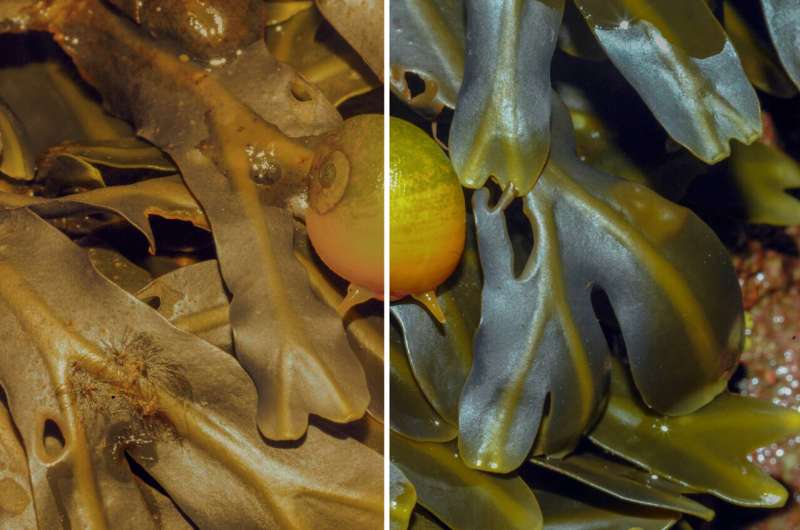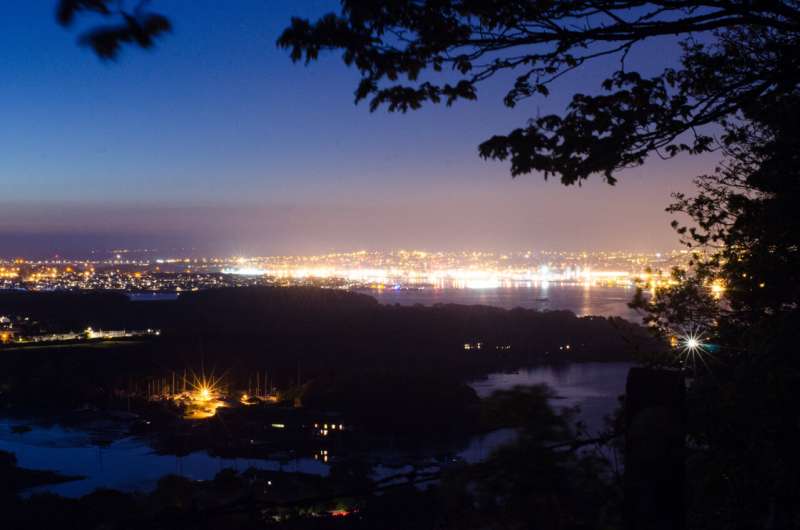
The gift of camouflage is being lost by species that rely on darkness for food and light for shelter.
The proliferation of energy efficient broad spectrum lighting has the potential to disrupt an array of visually guided ecological processes.
New research shows that new lighting technologies can help a predator discriminate between prey species.
The magnitude of the effect varies depending on the color of the organisms.
The study was conducted by researchers at the University of Plymouth and the PML.
It is one of the first to examine the potential for artificial light at night to affect the camouflage mechanisms of coastal species.
Oak McMahon, who is now a PhD candidate at the University of Plymouth, said that the study shows that new lighting technologies will increase the conspicuousness of prey species by reducing the efficacy of their camouflage. When illuminated by older style lighting, the species of snails found on our coastlines will remain hidden. When illuminated by modern broad spectrum lighting, they are clearly visible to predators and at far greater long-term risk as a result.
Funded by the Natural Environment Research Council, this is the latest research by the University and PML to highlight the growing levels of ALAN and its impacts on coastal environments.
Scientists used a well-established model to determine the appearance of three different colors of a snail.

They looked at how the species looked when illuminated by different forms of lighting. The lighting included 20th century narrow spectrum Low Pressure Sodium (LPS) lighting, three types of modern broad spectrum lighting, and metal Halide.
All snails were camouflaged. The yellow snails were more visible when illuminated by the sun or moon than the brown and olive ones.
The senior author of the study, Dr. Thomas Davies, is a lecturer in marine ecology at the University of Plymouth. Estimates show that a quarter of the planet is being affected by night-time light pollution. Some predictions say that LEDs will account for 85% of the global street lighting market in around five years, and our study shows that such advances will have repercussions for humans and animals alike.
The ability to light our environment around the clock has transformed the urban landscapes over the past century and has ushered in what some call the Urbano. The shift from the orange glow over the cities of my youth in the 70s and 80s has now shifted towards energy efficient wide spectrum LEDs which allow us humans to correctly perceive color. This work shows that the natural world is having to adapt at an increasing rate to the artificial changes we are making to the environment. To avoid the worst consequences of their adoption, we need to learn to adapt our technologies.
What can we do to reduce the impact of artificial lighting?
The need to address the situation is pressing, with estimates indicating that 23% of the world's surface is affected by ALAN.
There are a variety of methods available to planners and environmental managers when considering its ecological impacts.
Reducing the amount of light used, shielding lights to reduce their effects on the surrounding environment, employing part-night lighting during times of peak demand, and manipulating the spectrum of lighting to minimize ecological impacts are included in these.
While it may seem intuitive to suggest using narrow spectrum lighting to avoid these impacts, the effects of ALAN extend beyond those seen on camouflage and all parts of the visual spectrum will likely have some ecological impact.
More information: Oak McMahon et al, Broad spectrum artificial light at night increases the conspicuousness of camouflaged prey, Journal of Applied Ecology (2022). DOI: 10.1111/1365-2664.14146 Journal information: Journal of Applied Ecology Citation: Study shows advances in street lighting are reducing the efficacy of coastal species' camouflage (2022, March 26) retrieved 26 March 2022 from https://phys.org/news/2022-03-advances-street-efficacy-coastal-species.html This document is subject to copyright. Apart from any fair dealing for the purpose of private study or research, no part may be reproduced without the written permission. The content is provided for information purposes only.